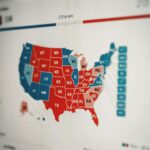Understanding Inflation
In recent months, the specter of high inflation has begun to haunt the economy. In October, the U.S. inflation rate hit a 31-year high, with consumer prices rising 6.2% from the previous year. Though you may have some fuzzy recollection of the concept from your intro econ class, I’m here to give you a brief refresher, and a bit of clarity about what’s likely causing this particular inflationary episode.
In brief, the term inflation refers to a general rise in prices. President Biden actually summed it up nicely earlier this week in his visit to the Port of Baltimore when he said, “everything from a gallon of gas to a loaf of bread costs more.” How much more? On average, things cost about 6.2% more than they did in October of 2020. This is the largest year-on-year increase we’ve seen in prices since 1990.
What’s particularly problematic is that over the same period, wages have increased 5.1%, meaning many workers are actually seeing a real reduction in their wages. That is to say, even though workers are seeing their paychecks increase, once the effects of inflation are taken into account, they’re actually taking a slight pay cut.
For context, the Federal Reserve likes to keep inflation somewhere in the neighborhood of 2%, and it has a number of different tools at its disposal in order to do so. In a healthy economy, a slow and stable increase in prices is actually desirable. It’s a lot easier to make economic decisions for the future when you can make them in the context of a stable and predictable inflation rate. High and/or volatile inflation rates, however, are problematic. It’s tough to enter into long-term contracts, for example, when you’re uncertain about the future direction of prices.
So what’s causing this recent bout of inflation? There are a few different ways to think about the causes of inflation, but one mechanism for inflation is that too much money is chasing too few goods. Currently, the “too few goods” part of the equation is likely more important than the “too much money” part, though both are contributing.
Over the course of the pandemic, the Federal Reserve has pumped more and more money into the economy in order to help spur consumer confidence and increase consumer spending. I’ll cover the role of the Fed in a future post. In short, however, pumping more money into the economy in times of economic malaise is one of the Fed’s key jobs. According to the economist Alexander Salter, “the Fed’s ‘expansionary’ activities could just be appropriate monetary policy.”
The more serious problem is that supply chain disruptions, which have led to the “shortage in everything” are mechanically resulting in price increases for those affected goods. We know from economics 101 that when the supply of something decreases, all else equal, the price will rise. In fact, it is the increase in prices that helps to alleviate shortages, because fewer people will be willing to purchase those items at the new higher prices.
What we’re seeing currently is this process playing out on a massive scale. Shortages in a few items will lead to price increases for just those items. Shortages in everything, however, leads to price increases for everything. And price increases for everything is just the definition of inflation.
Perhaps more concerning than the price increases, however, is that the massive shortages are resulting in real decreases in consumer welfare. Inflation is not causing these shortages; it’s just a reflection of these large-scale scarcities. Everything from cars to Christmas presents has been affected.
Over time, prices will adjust to alleviate shortages – and with luck, many of the pandemic-induced supply problems will begin to subside. In the short term, however, if we continue to have more money chasing fewer goods, we’ll continue to see inflation.




